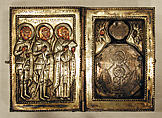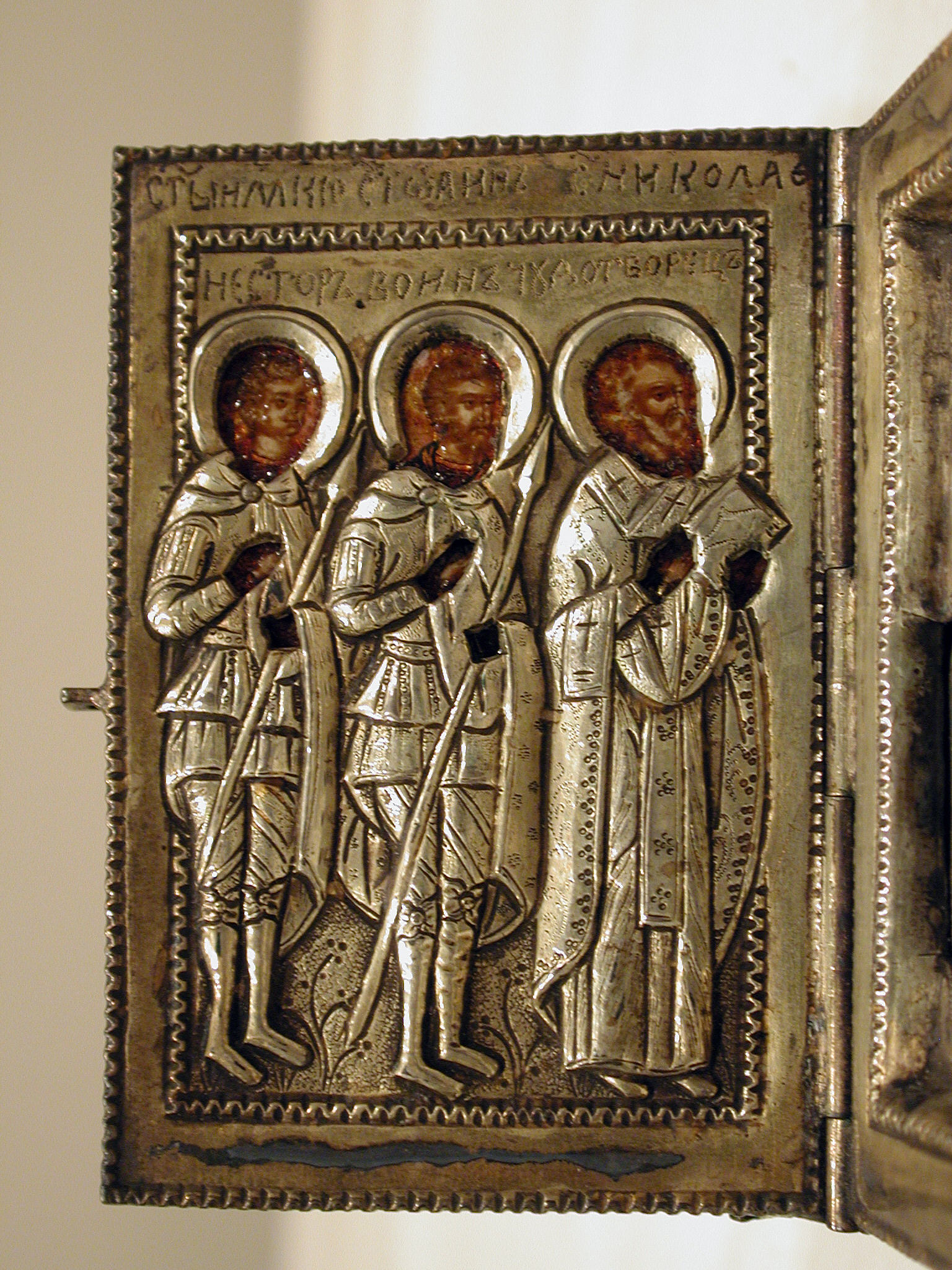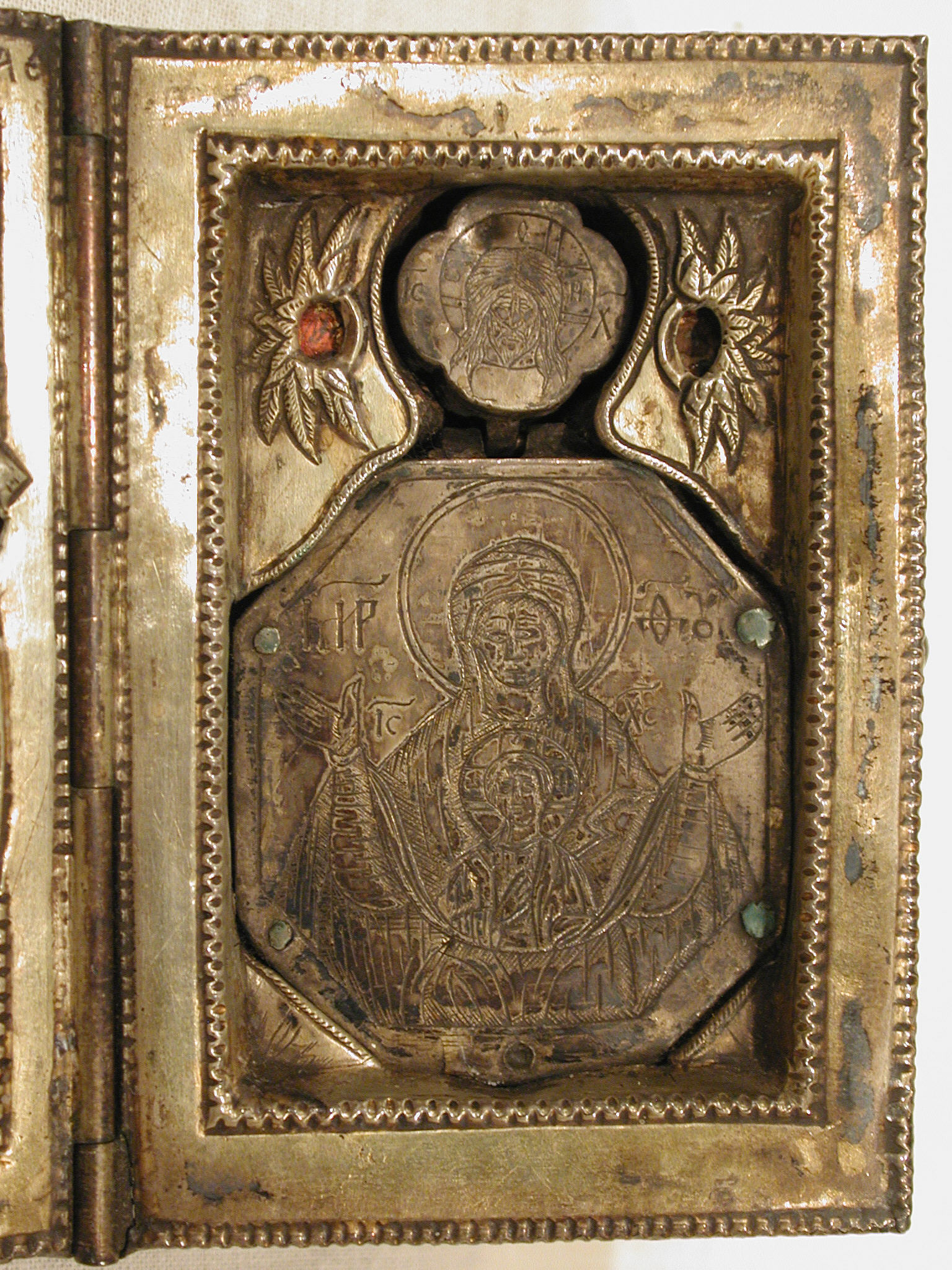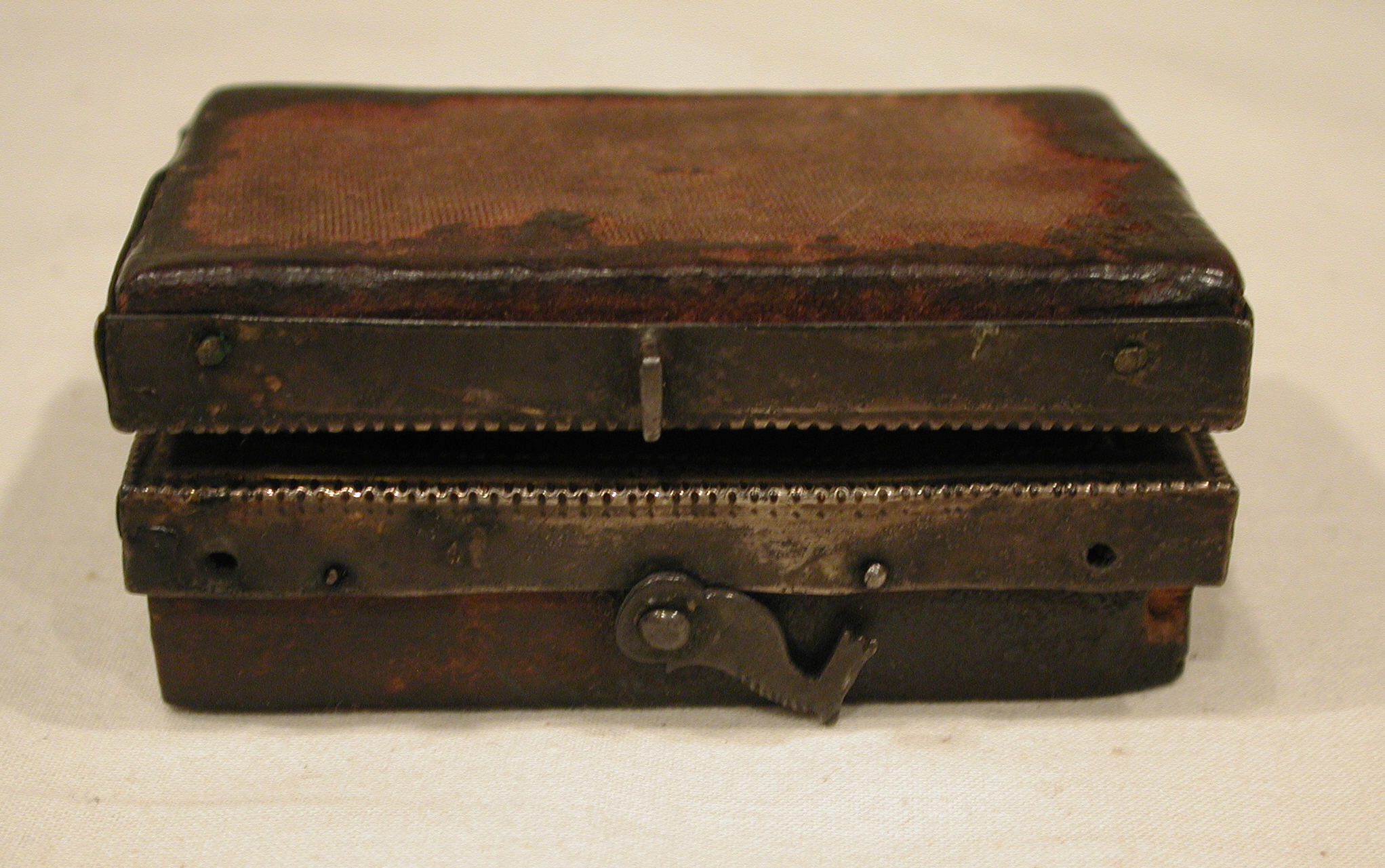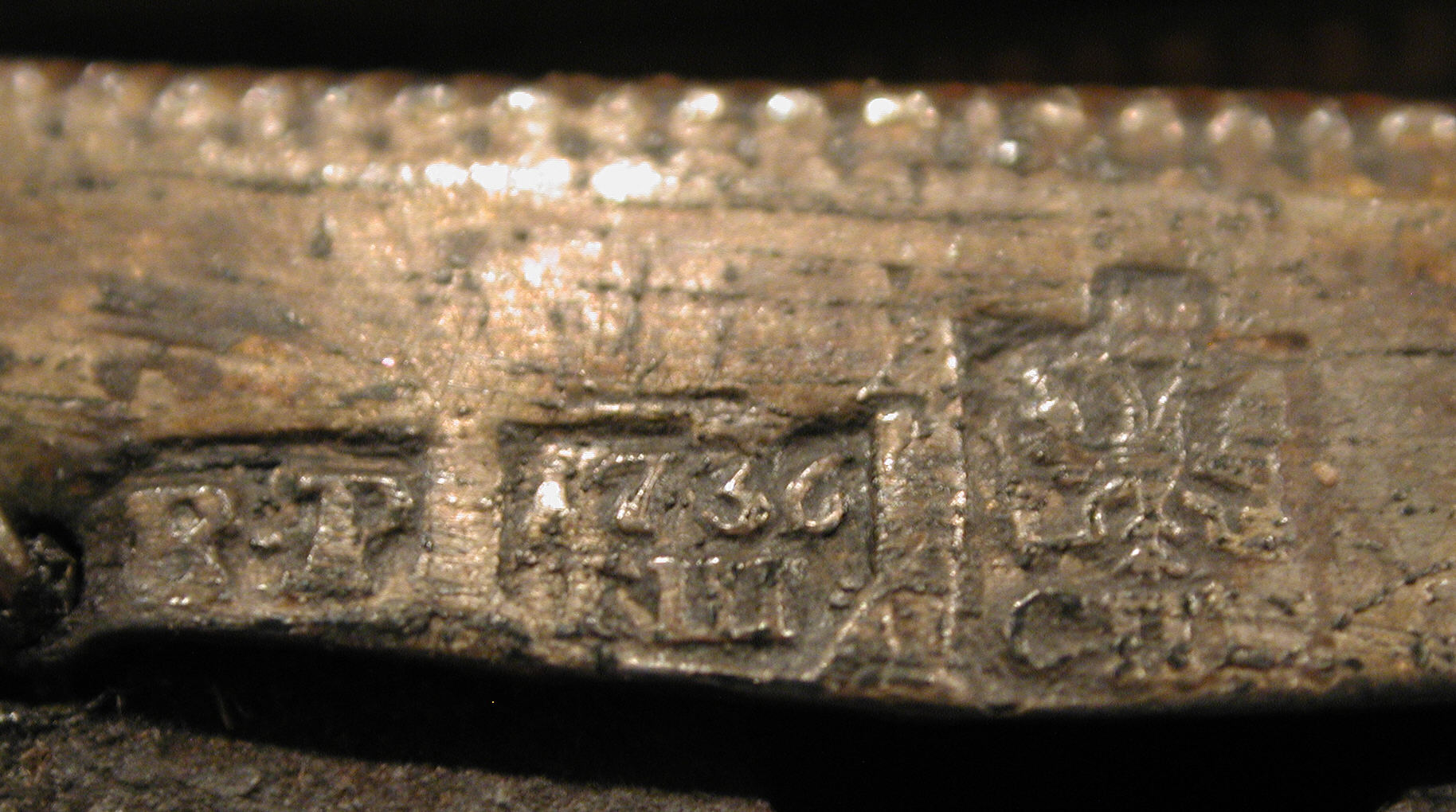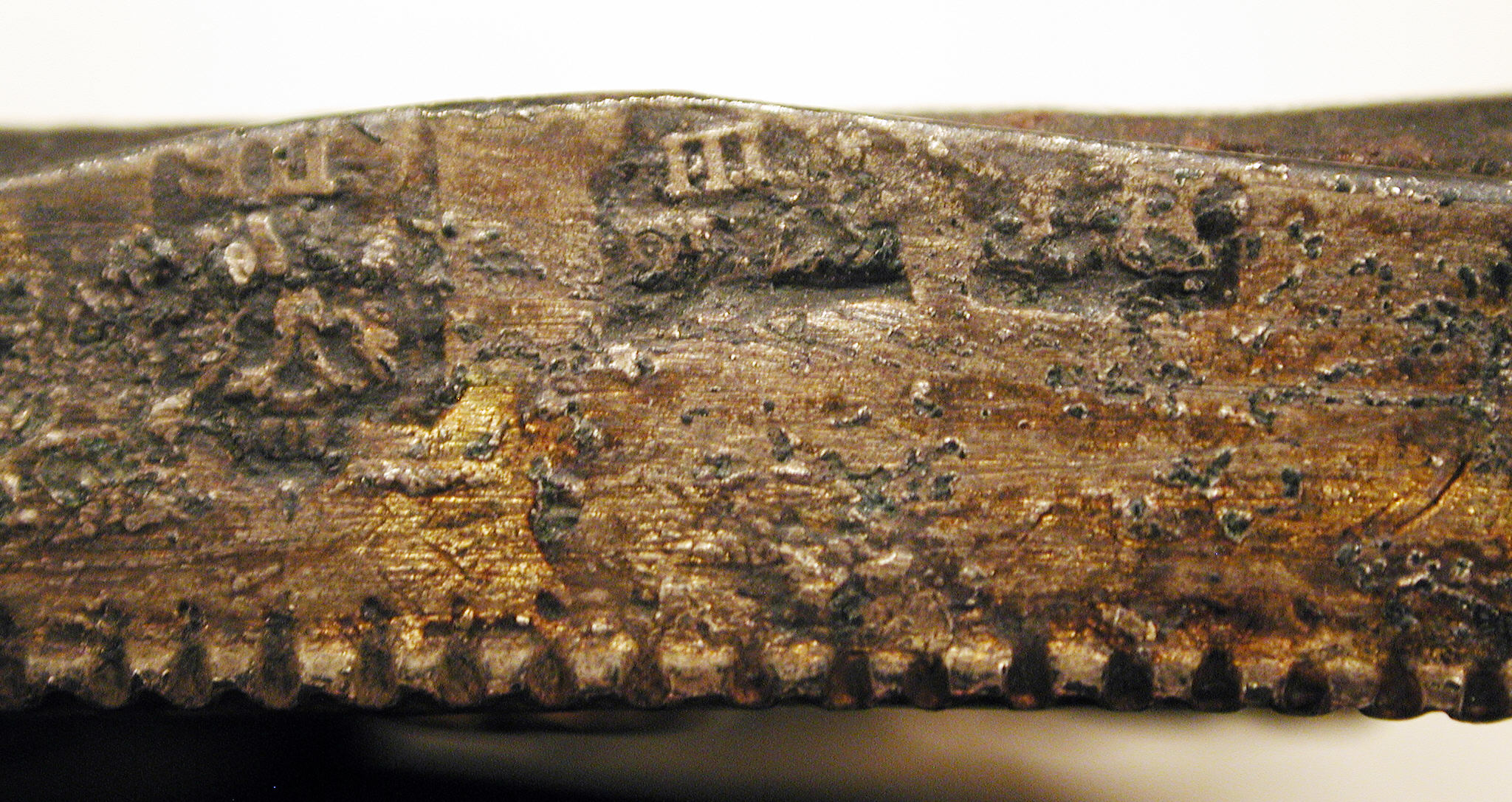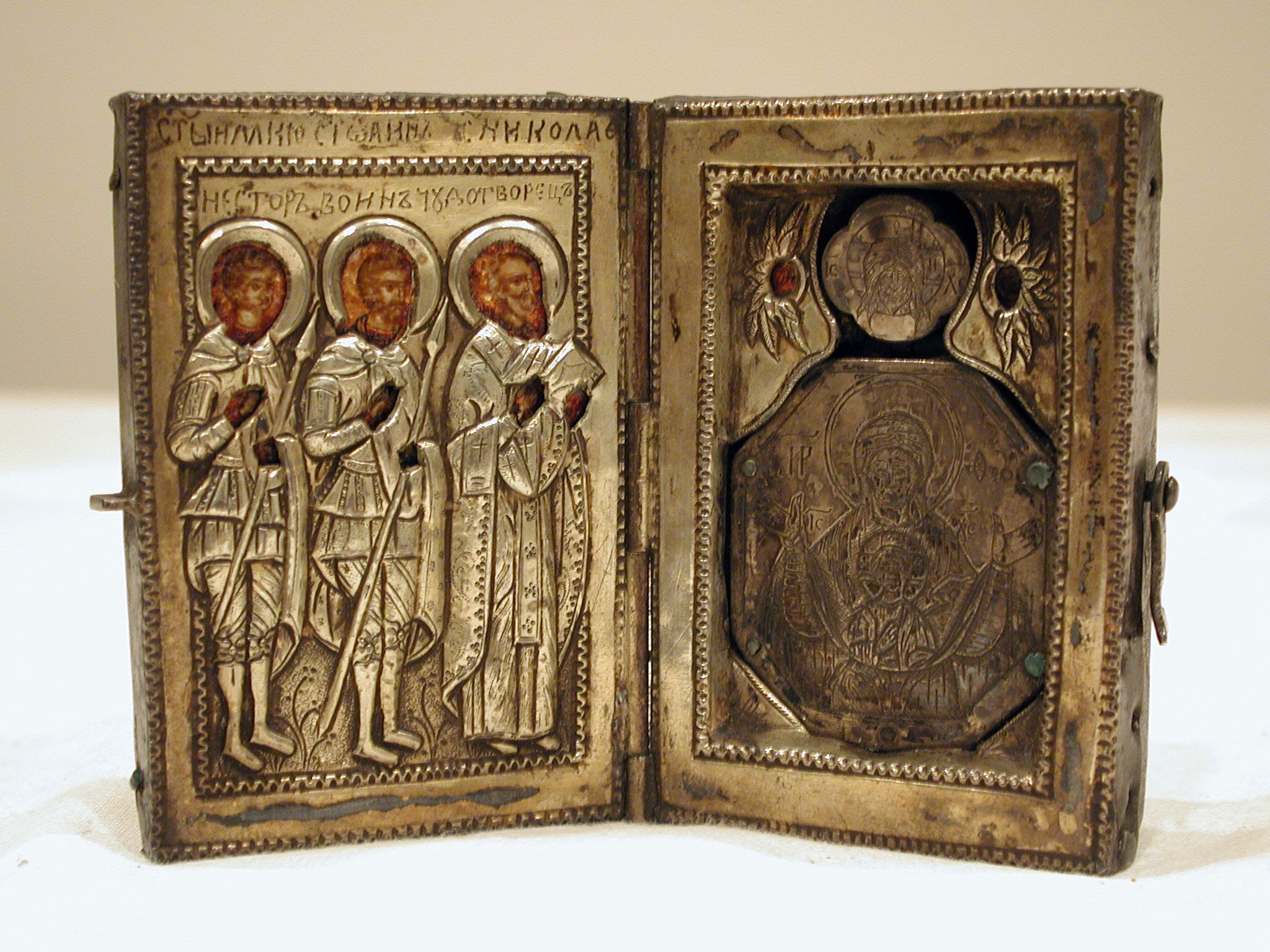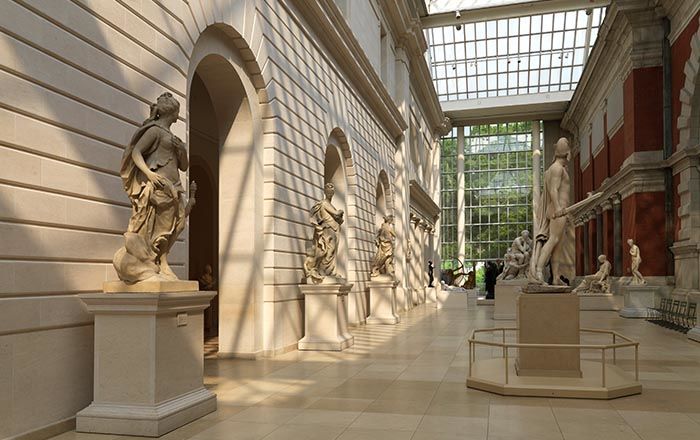Diptych
Not on view
This traveling Diptych is decorated with images of saints which are quiet common to the period of the early Ukrainian baroque.
The painter combines old (a somewhat simplified version of the depiction of the Mother of God of the Sign and full inscriptions of the names of the saints) and entirely new language of painting techniques and decorative elements (Roman military attires embellished with strongly pronounced baroque details and obviously individualized characterization of a smooth-faced and young face of Saint Nestor).
The text and canonic text abbreviations in Cyrillic are archaically divided into two lines:
Line 1: Saint Martyr, Saint Joan, Saint Nicolas
Line2: Nestor, Warrior, Miracle worker
All inscriptions could be read St. Martyr Nestor, St. Warrior Joan, St. Nicolas Miracle worker.
Devotional images of selected saints are frequently found in Russian icon painting. The figures depicted might be patrons saints particularly venerated in a given region. Saint Martyr Nestor and Saint Warrior Joan occupied extraordinary positions in the Ukrainian region where their role as warrior protectors was more emphatically perceived than elsewhere in Russia. Saint Martyr Nestor who died as "a glorious Christian young hero" in Russian orthodoxy is considered a patron saint of young warriors. Saint Warrior Joan was adopted by Russian Orthodox Church as a saint protector of prisoners of war in foreign lands. As a result of constant internecine warfare in the 16–17th centuries the depiction of the saint warriors became especially widespread in Chernigov (Chernihiv), a town 80 km north-west of Kiev.(see Natalia Komashko, Ukrainian icon painting, in History of icon painting, Moscow, 2002, pp.191-195)
The painting is protected by a silver (?) frame oklad which covers the whole picture but hands and faces. During 16 and 17th centuries oklads were made subsequently to the icon itself.
A clearly provincial character of the painting of this diptych, coupled with reminiscences of strictly heraldic compositional pattern of related icons from Pecherskaya Lavra School of icon painting point to the influence of Kiev.
This icon was probably a zakaznaya icona, a commissioned icon including client's eponymous saint.
This image cannot be enlarged, viewed at full screen, or downloaded.
This artwork is meant to be viewed from right to left. Scroll left to view more.
